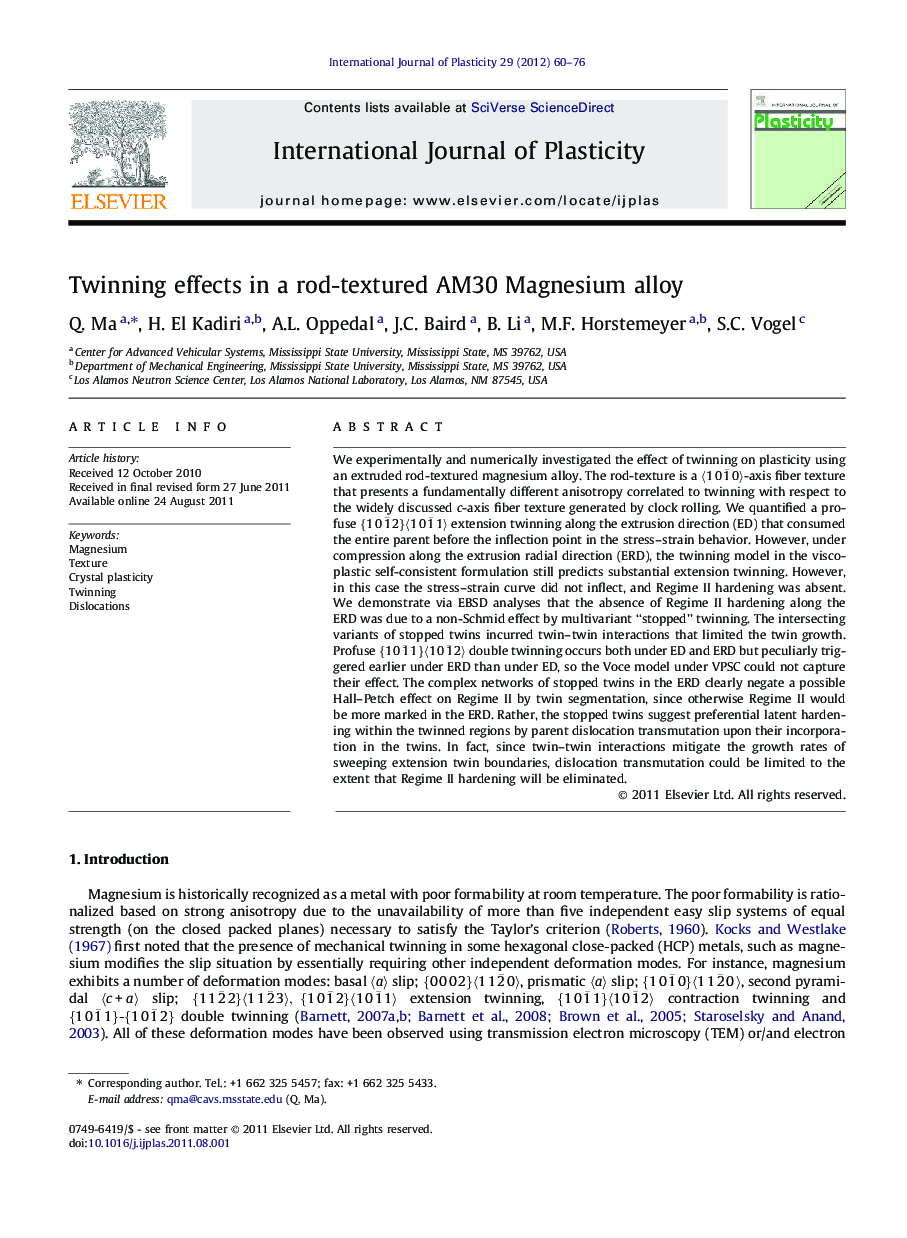| Article ID | Journal | Published Year | Pages | File Type |
|---|---|---|---|---|
| 786499 | International Journal of Plasticity | 2012 | 17 Pages |
We experimentally and numerically investigated the effect of twinning on plasticity using an extruded rod-textured magnesium alloy. The rod-texture is a 〈101¯0〉-axis fiber texture that presents a fundamentally different anisotropy correlated to twinning with respect to the widely discussed c -axis fiber texture generated by clock rolling. We quantified a profuse {101¯2}〈101¯1〉 extension twinning along the extrusion direction (ED) that consumed the entire parent before the inflection point in the stress–strain behavior. However, under compression along the extrusion radial direction (ERD), the twinning model in the viscoplastic self-consistent formulation still predicts substantial extension twinning. However, in this case the stress–strain curve did not inflect, and Regime II hardening was absent. We demonstrate via EBSD analyses that the absence of Regime II hardening along the ERD was due to a non-Schmid effect by multivariant “stopped” twinning. The intersecting variants of stopped twins incurred twin–twin interactions that limited the twin growth. Profuse {101¯1}〈101¯2〉 double twinning occurs both under ED and ERD but peculiarly triggered earlier under ERD than under ED, so the Voce model under VPSC could not capture their effect. The complex networks of stopped twins in the ERD clearly negate a possible Hall–Petch effect on Regime II by twin segmentation, since otherwise Regime II would be more marked in the ERD. Rather, the stopped twins suggest preferential latent hardening within the twinned regions by parent dislocation transmutation upon their incorporation in the twins. In fact, since twin–twin interactions mitigate the growth rates of sweeping extension twin boundaries, dislocation transmutation could be limited to the extent that Regime II hardening will be eliminated.
► Anisotropy in rod-textured Mg was studied by compression and predicted by VPSC. ► Anisotropy and slip–twin interactions are different from those in spotty texture. ► Observations suggest minimum effect of Hall–Petch induced by twin boundaries. ► Contraction twinning triggered at different CRSSs upon changing loading direction. ► Contemporarily crystal plasticity could not capture this non-Schmid’s effect.
